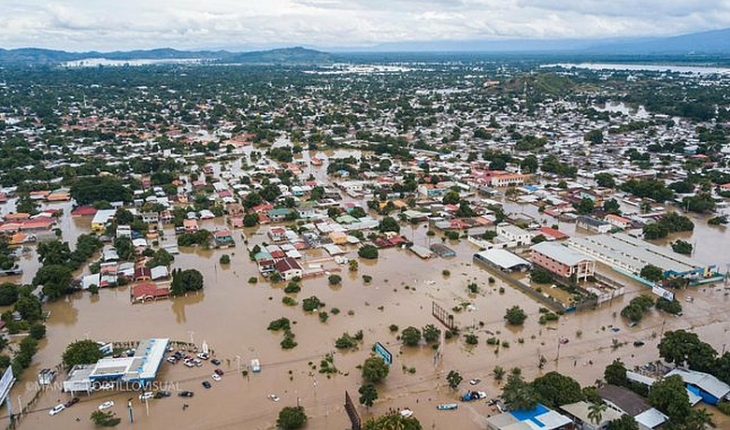There were no casualties in Cuba, but the meteor already left dozens dead in Central America and the southern border of Mexico where it passed in the previous days. In Guatemala, survivors are wanted. Cuban authorities reported that 25,000 people had been pre-emptively evacuated in Villa Clara province and an unidentified number left their homes in low areas in Sancti Spíritus and Ciego de Avila.The Institute of Meteorology Cuba determined that Eta penetrated over the 4.30 am locals along the south coast on the boundaries of Sancti Spíritus and Ciego de Avila with sustained winds of 100 kilometers per hour and higher streaks. You will maintain a north-northeast course with decreased translation speed. There were floods in the Chambas River in Ciego de Avila and even in the Vicana River in Granma province. The local population reported heavy downs and in coastal areas waves of up to four meters. But as the hours passed, the situation in Havana began to worry, as coastal flooding is expected in the Malecon of the capital with particularly low areas from the exit to the Eta Sea bound for Florida. Meanwhile, rescuers in Guatemala continued to search for people believed to have been buried by a huge alud of land caused by rain. Authorities so far confirmed 27 people who have been killed and at least 108 missing in Guatemala, many of them in the deslave in San Cristobal Verapaz.According to Guatemalan authorities, some 60,000 people have been evacuated from at-risk areas and 240,000 have been affected by deslaves and floods as a result of storm laggards. Pope Francis spoke on Sunday about the people of Central America, hit “by a violent hurricane, which has caused many casualties and enormous damage, also aggravated by the already difficult situation due to the pandemic.” Speaking to the faithful gathered in St. Peter’s Square, Francis prayed that “the Lord may receive the deceased, comfort their families, and sustain all who have been tested, as well as all who are doing all they can to help them.” The U.S. National Hurricane Center issued tropical storm alerts for South Florida and the Keys, as well as several warnings for central Cuba. Parts of South Florida and the Keys were under hurricane warning. The meteor was on Sunday morning at 95 kilometers (60 miles) southwest of Canagua, Cuba, and moved northeast at 19 km/h (12 mph) with winds of 95 km/h (60 mph). The storm is expected to hit the Keys and South Florida on Sunday night or Monday. Florida Gov. Ron DeSantis on Saturday declared a state of emergency in eight counties at the state end of the state in the face of Eta’s advance and asked residents to stock up. South Florida began emptying ports, and a few shelters were opened in Miami and the Florida Keys for people living in mobile homes or lowlands. Miami-Dade County declared a state of emergency Friday night and noted that there would be an active flood warning until Tuesday night. Further south, in the Keys, the authorities were closely following meteor movements, although at the moment they had no plans to evacuate tourists or residents. They urged the population to secure their boats and urged visitors to reconsider their plans until the storm had passed. Eta became a Category 4 hurricane, and authorities from Panama to Mexico continued to assess the damage after several days of torrential rains this week. In Guatemala, search teams first had to overcome multiple deslaves and deep mud just to get to the place where authorities estimate that about 150 homes were devastated. In neighboring Honduras, Maria Elena Mejía Guadron, 68, died when the muddery waters of the Chamelecón River flooded the Planeta neighborhood in San Pedro Sula on the Thursday before dawn. Mirian Esperanza Nájera Mejía had evacuated her home overnight with her two children and Mejía, her mother. But, while she held on tightly to her children, the current dragged Mejía.In southern Mexico, on the other side of the border with Guatemala, 20 people died after heavy rains associated with Eta caused deslaves and floods in streams and rivers, according to Elías Morales Rodríguez, civil protection officer of the state of Chiapas.The worst incident in Mexico occurred in the mountainous municipality of Chenalhó, where 10 people were swept away by a stream grown due to rain; their corpses were later found river abGarlic. The floods in the neighboring state of Tabasco were so extensive that President Andrés Manuel López Obrador shortened a trip to western Mexico to fly to Tabasco, his home state, and oversee aid efforts. Hurricane Eta reached northeastern Nicaragua and threw torrential rains for days as it slowly approached the coast. Heavy rains also hit the western part of Panama hard, leaving eight dead and hundreds of people affected.
translated from Spanish: Storm Eta crosses Cuba as Guatemala searches for potential survivors
November 8, 2020 |





